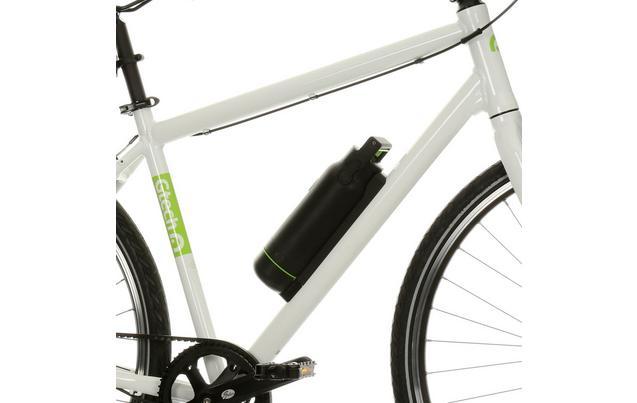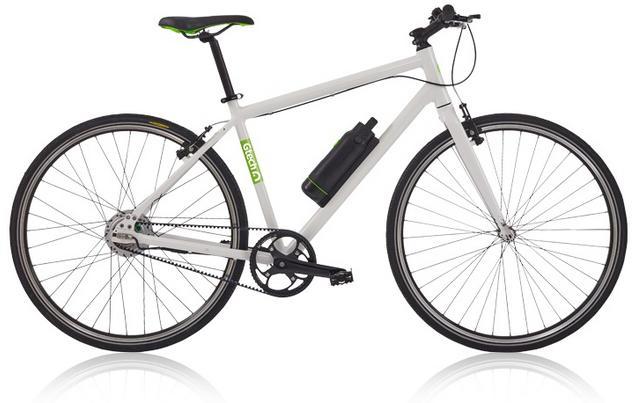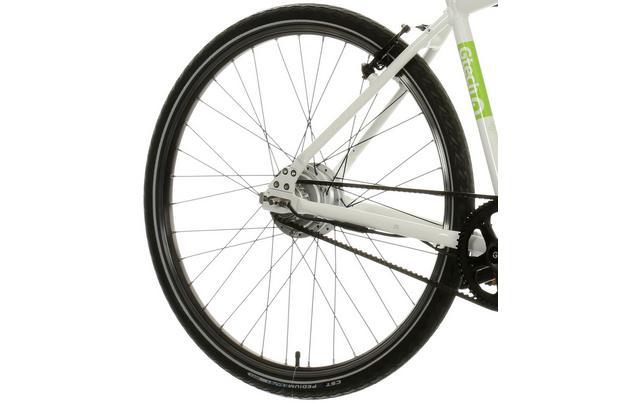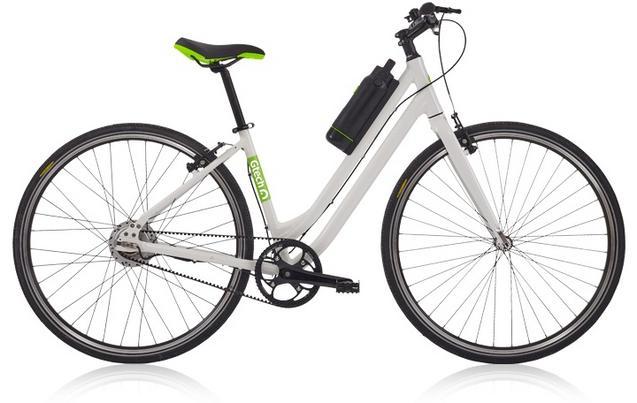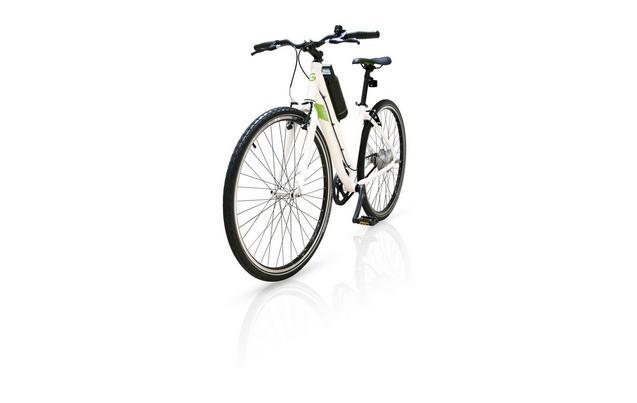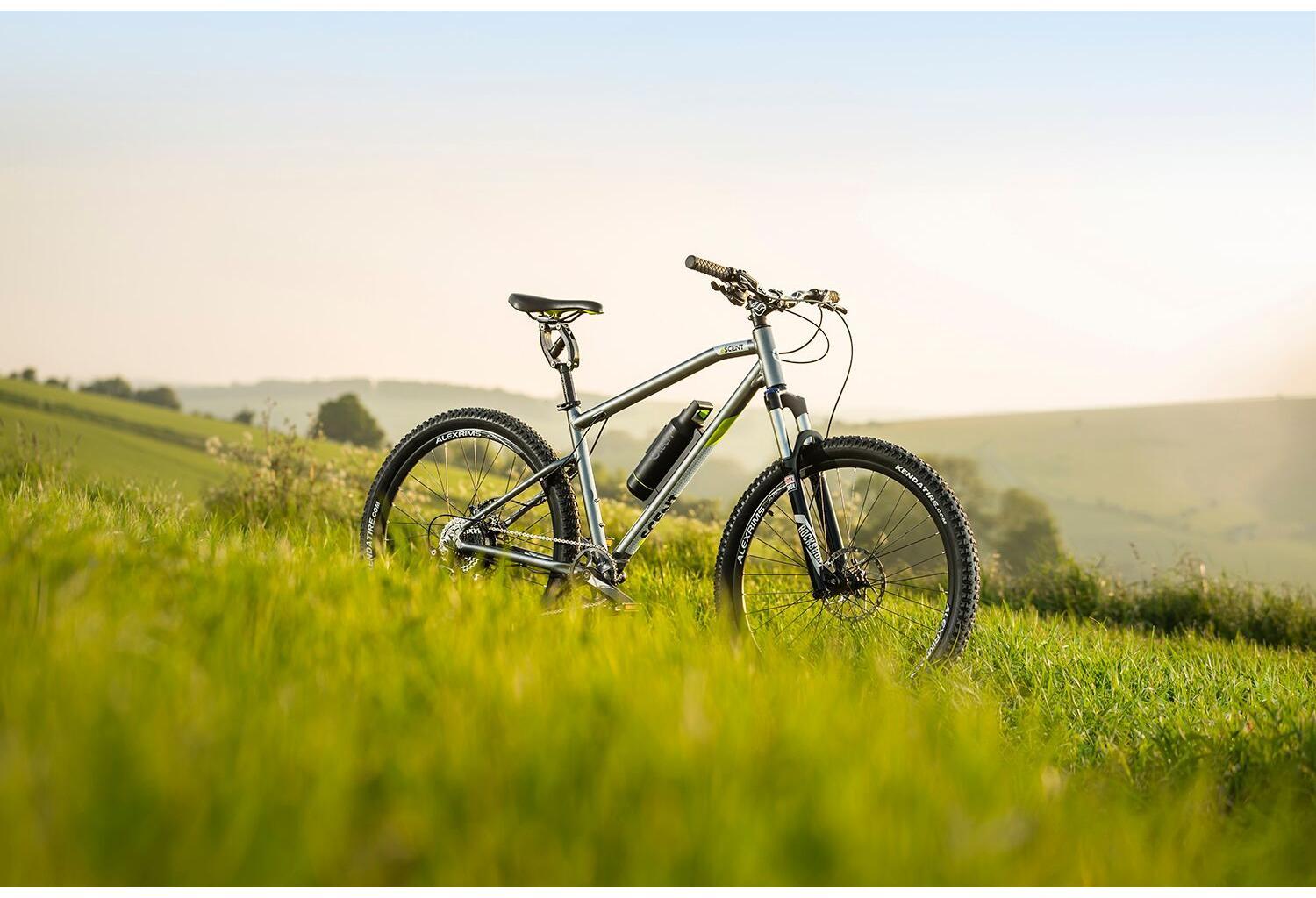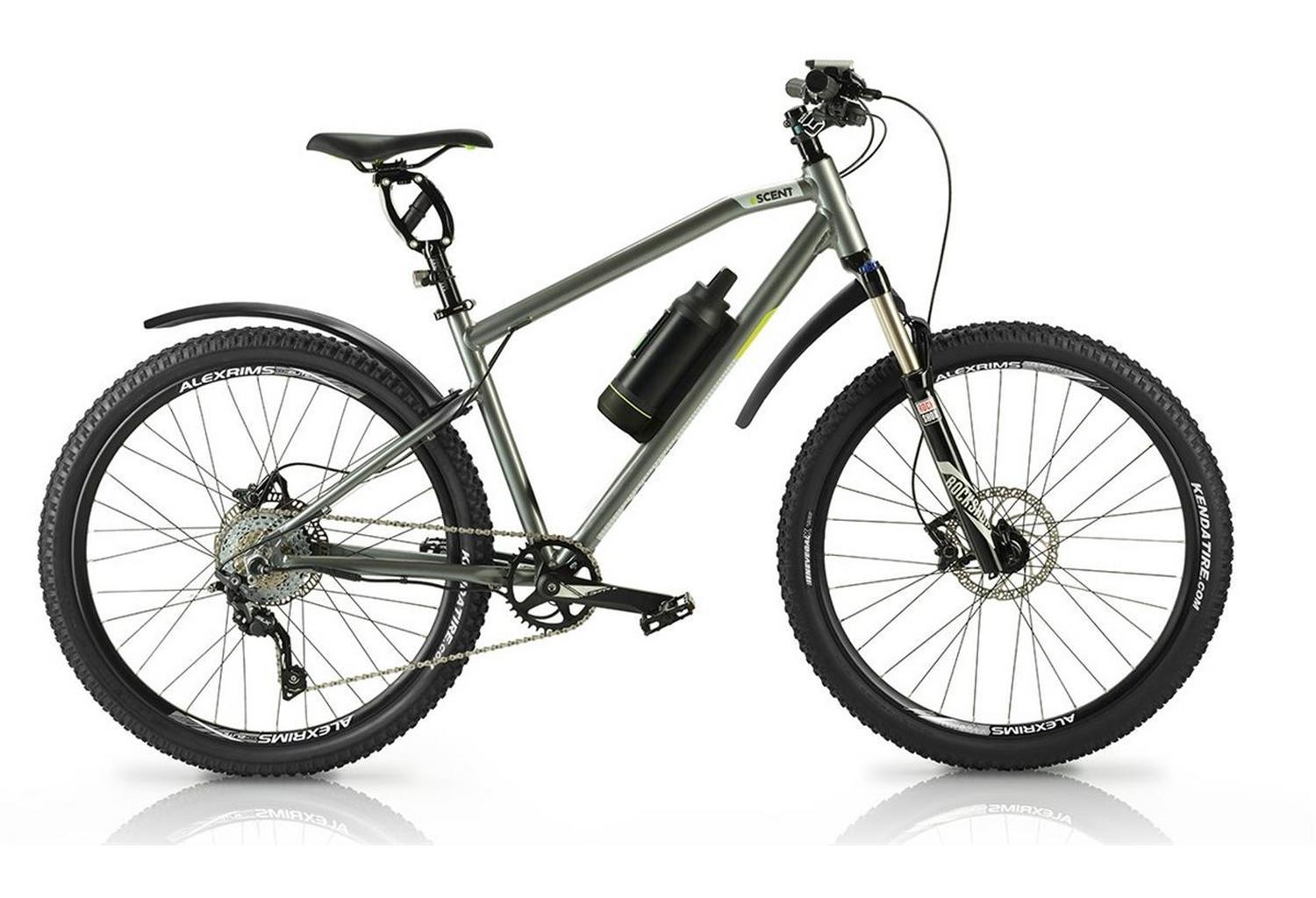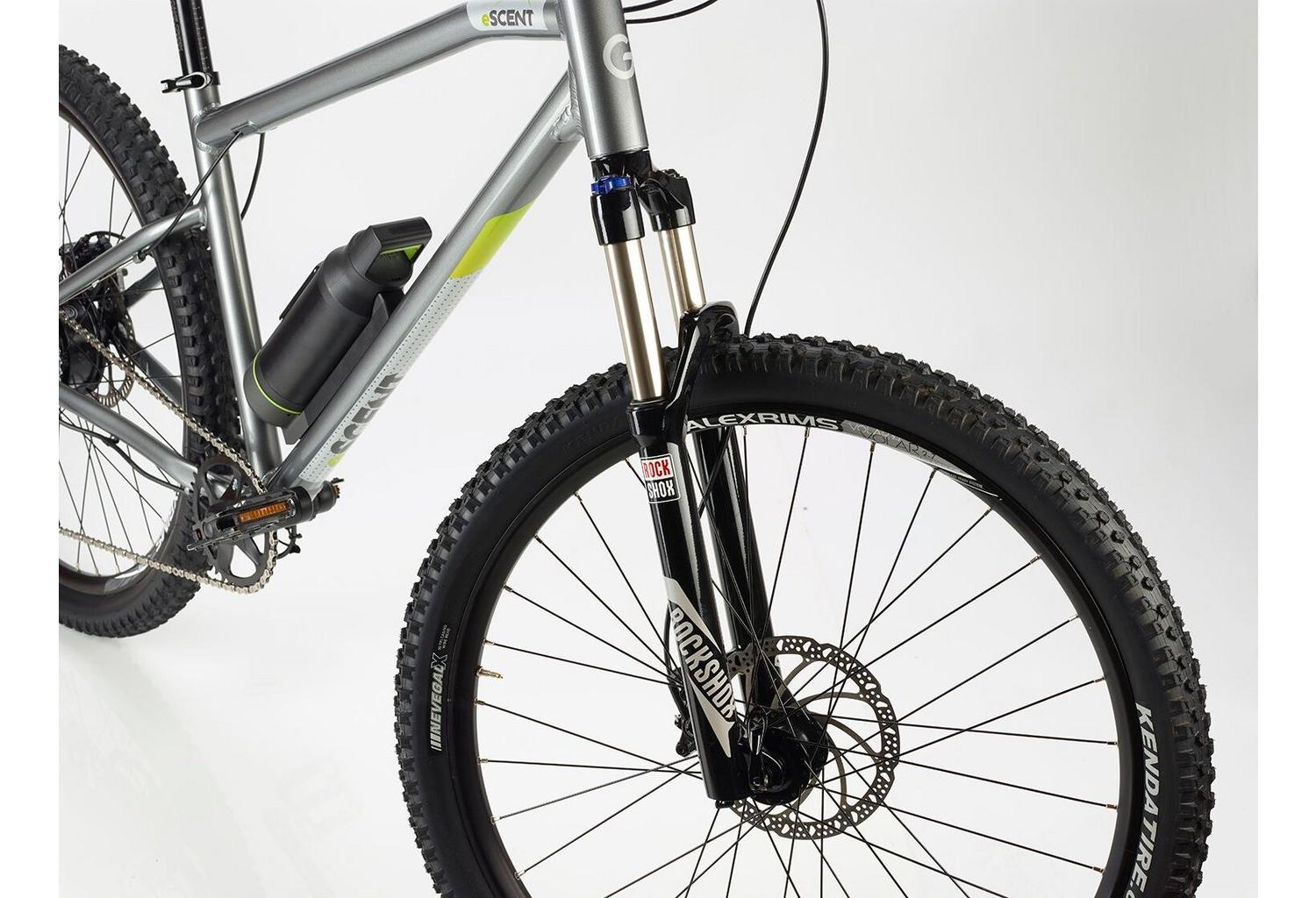If you haven't explored the world of e-bikes yet, then prepare to be blown away by a Gtech electric bike. Giving you that extra push when you need it most, Gtech e-bikes use a mixture of cutting edge technology and intelligent design to change cycling completely.
How the GTech eBike Works
See it in action
High torque motor
Using a compact 36v motor built into the rear wheel, riders can select from two cruising speeds or switch assisted pedalling off all together to turn their Gtech ebike into an ordinary bike.
Lithium-ion battery technology
Using the same lightweight build and performance technology found in car batteries, Gtech batteries provide assisted cycling for up to 30 miles, or 10 miles on tougher rides. You'll get a full charge from flat in just 3 hours.
Aviation grade aluminium
Using the same strong, light and durable aluminium found on commercial aircraft, your Gtech e-bike frame weighs in at just 16kg, making it easy to get up hills even without assisted pedalling.
Our GTech bikes
Gtech eBike Sports
Perfect for both commuters and thrill-seekers, this reliable Gtech ebike will assist pedalling up to speeds of 15mph and is good for 30 miles of powered riding. With no gears, a one touch button to switch between assisted and unassisted pedalling and a clear LED display to tell you how much charge you've got left, the Gtech eBike sports is incredibly easy to use on any type of ride.
Frame: Lightweight aluminium 20" frame
Forks: Aluminium rigid forks
Gears: Single speed
Brakes: V-Brakes give reliable braking whatever the weather
Wheels: 700c alloy rims are strong and reliable
Range: Up to 30 miles
Gtech City Lowstep
Designed for both commuters and leisure riders, the Gtech City Lowstep is the perfect urban ebike. Offering the same 30 mile range and 15mph assisted pedalling speed, the City Lowstep differs from the eBike Sports with a step-through frame, ideal if you don't fancy stretching that suit or skirt!
Frame: Lightweight aluminium 20" frame
Forks: Aluminium rigid forkss
Gears: Single speed
Brakes: V-Brakes give reliable braking whatever the weather
Wheels: 700c alloy rims are strong and reliable
Range: Up to 30 miles
Gtech eScent Mountain Bike
The Gtech eScent 650b Electric Mountain Bike allows you to enjoy the thrill of the ride without the struggle. Although it looks just like a normal mountain bike, as soon as you pedal you will feel the difference.
Frame: Lightweight aluminium 17.5" frame
Forks: Rockshox, Air, 120mm travel
Gears: Shimano Deore, 10 speed
Brakes: Hydraulic Disc brakes
Wheels: 27.5" with Kenda 27.5 x 2.35 tyres
Range: Up to 30 miles
Frequently Asked Questions
Have you been wondering about e-bikes? What they are, what the law is, and how can they help you? If so, you've come to the right place. Here you'll find the answers to many of the most common questions about electric bikes. We hope you find it useful!
E-bikes, or to give them their proper name, 'electrically assisted pedal bicycles', are bikes which feature both a motor and a battery. The motor provides additional power only whilst the rider is pedalling. There's no 'throttle', but there are a number of levels of assistance to select, based on the type of ride or how energetic you feel. Law requires that the motor assistance stops once the bike reaches 15.5 mph, but of course you can pedal faster than that if you've got the energy!
Fun! Electric bikes are smooth and easy to ride; riding on flat ground feels like riding gently downhill, and climbing hills is easy. As the motor helps with acceleration, e-bikes are really well suited to riding in stop-start city traffic; you'll always feel safe and in control since the motor assistance stops as soon as you stop pedalling or when you pull on the brakes.
Absolutely not! The motor simply provides assistance to your pedalling; you're still riding the bike. You can set the level of assistance according to the terrain, how much help you want, or how much of a workout you fancy. This assistance allows you to go further on a ride, ride up steep hills with ease, and stops you from becoming winded or sweaty.
Plenty of people benefit from riding an electric bike:
- E-bikes are perfect for the cycling commuter. An e-bike can help to take the sweat out of cycling, enabling you to ride to work in your work clothes and turn up feeling fresh, without the need to shower or change. Another benefit is that the motor helps you to accelerate from stationary, which is incredibly helpful in stop-start city traffic.
- If you're less fit than you'd like, an e-bike will help you to tackle longer rides at faster speeds, as well as helping you to easily power up those hills.
- Family riders will be able to easily keep up with their enthusiastic child or partner on an e-bike. The extra assistance is also helpful when carrying a child on a child bike seat, tag-along bike, or in a child trailer. (If you'll be doing this, we recommend riding at lower speeds and using a higher torque 'climb' mode, if available.)
- Leisure riders will really appreciate the reduction in effort you need to put in, making every trip a breeze.
Anybody over the age of 14 is allowed to ride an e-bike on public roads, as well as paths and tracks where you can legally ride a regular bike (cycle paths but not pavements). There's no need for the bike to be registered and you don't need a driving licence or insurance*. The law doesn't require an e-bike rider to wear a motorcycle helmet*, but we always recommend that you wear an ordinary bicycle helmet, CE marked and approved to EN 1078 (which all of our helmets are). If you're going to be riding in darkness or when visibility is poor, you'll need to equip your bike with a powerful set of front and rear bike lights.
*Except in Northern Ireland (see 'E-bikes and the law' section below for full details)
As fast as you like - depending on your own strength and stamina! E-bike motors are only legally allowed to provide assistance up to the speed of 25 km/h (15.5 mph); at speeds above this it's all down to the energy that you put in.
Some retailers may offer high power or high speed e-bikes or e-bike conversion kits; we don't sell these as they're classified as mopeds under UK and ROI law. This type of bike must be fully Type Approved as a moped, be registered with the DVLA, be fitted with a number plate, and the rider has to have a driving licence, be insured and must wear a motorcycle helmet. Some claim to have fitted a switch to allow these bikes to be de-restricted when 'off road' - however, this means that the bike is still legally classified as a moped, due to its higher speed or power capability.
Under the law in England, Wales, Scotland and the ROI, e-bikes are classified as Electrically Assisted Pedal Cycles (EAPC). To be classed as an EPAC, the bikes must meet the following criteria:
The motor has a power rating of 250 watts or less Assistance is only provided when the rider is pedalling and assistance is only provided up to a speed of 25 km/h (15.5 mph) The law also permits a 'walk assistance' mode, where the bike moves with you when walking alongside it. This is limited to 6 km/h (3.7 mph).
Being free to ride an e-bike wherever a regular bike can be ridden is an enormous benefit to cyclists, but could be jeopardised by people using higher power or faster e-bikes - particularly if there's an accident. Because of this, we'll never sell or advocate the use of electronic speed de-restriction devices or techniques, and we've made sure that it's impossible to use these with the e-bikes we sell.
If you're in Northern Ireland, the law is different and you'll need the following to legally ride an e-bike:
- tax
- insurance
- motorcycle helmet
- DVLA registration
- AM category moped licence.
The range of an e-bike mainly depends on the battery's capacity (the number of watt / hours). However, the range is also influenced by plenty of other things, such as:
- The rider's weight
- Speed changes
- Luggage weight
- Stop and start travel in traffic
- Terrain
- Drag caused by the road or track surfaces
- The tyres' type, condition and pressure
- The bike's condition/level of maintenance
- Average travel speed
- Wind speed and direction
Unlike electric cars, e-bikes do not use 'regenerative braking', where braking recharges the battery. This is because the lower mass and speed of an e-bike means there's less wasted energy to capture, and the increase in drag that this system creates wouldn't make for a good ride.
This varies with the battery's capacity. On average, a full recharge from empty usually takes between 6 and 8 hours, so the bike can easily be fully recharged overnight. However, it's usually best to recharge the battery after every ride, so that the bike's ready to go whenever you are. E-bikes use lithium ion batteries, which can be recharged even when they've not been fully discharged.
If you commute, it's a good idea to grab a second charger so you can charge the battery up when you're at work.
The restrictions that apply to normal bikes on public transport also apply to e-bikes. These vary from region to region, as well as between different transport operators. Therefore, it's wise to check before you travel!
Again, this varies with the capacity of the battery. We'll take a look at the Carrera Crossfire-E with the SR Suntour system as an example.
For a full recharge, the charger consumes 1.8 amps for 6 hours, which equals 2.48 kilowatt hours (KWh). The average UK price per KWh is £0.139*, resulting in a total cost of £0.35 for a full recharge.
With the SR Suntour system, the range is affected by the mode selected, with a minimum of 80 km (49.7 miles) to a maximum of 130 km (80.8 miles). The cost varies from 0.7 pence per mile at the minimum range, through to 0.4 pence per mile at the maximum range.
Even when we take battery deterioration into account, the total cost rises to a max of 2.1 pence per mile and a minimum of 1.3 pence per mile.
* 2015 data from the Department of Energy & Climate Change
If you read a newspaper or watch the news, it's likely that you've heard of cases where lithium ion batteries have caught fire. Whilst lithium ion batteries have an excellent capacity for their weight, the trade-off for this high performance means there are a few risks.
When our bike gurus are selecting the batteries for our e-bikes, they ensure that:
- The cells used in the battery are from one of the top three lithium ion cell manufacturers in the world.
- The battery pack manufacturer fully tests and grades every cell, as well as fitting a sophisticated electronic Battery Management System (BMS) in every battery pack. The BMS continuously monitors every cell's electrical current and temperature. If the system senses any potential problems, it'll safely shut down the battery and won't allow it to be turned back on if there's any risk that the battery is faulty.
- The battery charger has been specifically designed for use with that particular battery for that particular bike, and is able to communicate with the BMS during charging.
- The battery pack has to be fully approved to UN / DOT 38.3. This includes extreme charging and discharge testing, along with high temperature and physical abuse tests.
Like the batteries in your phone and your laptop, the capacity of the lithium ion batteries found in e-bikes deteriorates over time and with use. Halfords' e-bike batteries are guaranteed to retain at least 60% of their original capacity after two years, or the equivalent of 500 full recharges. However, bear in mind that this depends on correct use, regular recharging, correct storage preparation and correct storage.
The Battery Management System built into the battery pack keeps a record of the exact number of charge cycles it's been through and whether the battery's been correctly charged and stored.
If you're planning to be out on your e-bike frequently, you might want to buy a second battery. This means that you'll always have a charged battery ready to go, as well as prolonging the life of the original battery since it won't be charged as often.
Cycling is the most efficient form of transport on earth, producing (on average) 21 grams of carbon dioxide per kilometre ridden*. This makes it even more efficient than walking!
An e-bike's emissions are slightly higher, since its manufacture requires more energy and recharging consumes electricity. However, since riding an e-bike reduces the rider's effort (by up to 62.5 %*), the total efficiency and emissions end up being only slightly higher, at 22 grams of CO2 per kilometre ridden*.
* Source: European Cyclists' Federation
We're able to get hold of all the spares for the electrical drive system from our suppliers, so we can easily repair or replace any worn or faulty parts to keep your bike on the road for a long life.
Our in-store experts can help you out by recommending and supplying the right accessories for your particular e-bike. They'll be able to tell you which kick stand and mudguard your bike needs, as well as being able to help out with replacement or second batteries and chargers.

